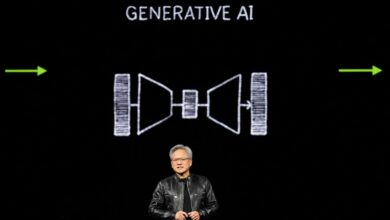OpenAI’s GPT-4o Aims to Enhance Voice Assistants

OpenAI’s new GPT-4o artificial intelligence model could enhance real-time voice interactions, improving the experience for the growing number of consumers using voice assistants.
PYMNTS Intelligence found that the use of voice assistants has been steadily increasing, with millions worldwide relying on the technology for various tasks, from setting reminders to controlling smart home devices. As a result, tech giants like Google, Amazon and Apple have been investing heavily in developing more advanced voice assistant technologies.
OpenAI’s GPT-4o aims to capitalize on this trend by offering enhanced ease of use and processing speed. OpenAI claims the model can engage in real-time conversations and respond to user queries and requests without noticeable delays.
Up until now, the ChatGPT experience has been chiefly a typical chat with typing prompts, Muddu Sudhakar, co-founder and CEO of the generative AI company Aisera, told PYMNTS.
“Then OpenAI added more capabilities, like images and voices,” he said. “But they were not seamless. Well, now they are. It looks like there has been a complete revamping of the ChatGPT form, where multimodal capabilities are native. This represents a major leap. It makes the user experience more natural and effective — like interacting with a human.”
PYMNTS surveyed nearly 3,000 U.S. consumers last year for the report “How Consumers Want to Live in the Voice Economy” to understand their attitudes toward voice technology, including use, challenges and future expectations. Most consumers said they prefer voice technology due to its speed, ease of use, and convenience compared to typing or using touchscreens, with some also perceiving it as more secure.
Many consumers said they believed that voice assistants would eventually possess human-like intelligence and reliability, and millennials were the most optimistic about this possibility. At the same time, baby boomers and seniors remained more skeptical.
OpenAI’s Play for Voice
During a demonstration, an OpenAI employee received a guided deep breathing tutorial from the AI, showcasing its potential applications in healthcare, education and customer service. As consumers become more comfortable using voice assistants for a broader range of tasks, the demand for such personalized and intuitive experiences is expected to grow.
The release of GPT-4o signals OpenAI’s commitment to staying at the forefront of the voice assistant industry as competition among tech companies intensifies. The impact of GPT-4o and other advanced voice assistant technologies on businesses and consumers remains to be seen. Still, experts predict these developments will increase efficiency, personalization and accessibility across various sectors.
AI Voice Assistants Transform Online Shopping
A new generation of AI-powered voice assistants is transforming the online shopping experience. Major retailers are integrating advanced language models into their platforms to provide personalized, conversational customer interactions.
Amazon has an AI-powered shopping assistant that can be accessed in the Amazon mobile app’s search bar. Walmart’s search feature lets customers search for products based on use cases. These AI assistants can understand context, provide recommendations and streamline buying.
Smaller retailers are also adopting AI technology. Vertex AI offers customizable voice assistant solutions, enabling businesses to create virtual shopping assistants. As language models like ChatGPT continue to advance, even more sophisticated AI shopping experiences are on the horizon.
While some shoppers may still prefer human interaction for complex purchases, the rapid improvement of AI’s language capabilities promises to make virtual shopping assistants an increasingly valuable tool for retailers looking to enhance customer engagement and boost sales.
Sudhakar pointed out that voice assistants are set to change the future of user interfaces, potentially replacing traditional text-based systems. As these technologies improve, they promise to offer more intuitive and accessible interactions. This shift could transform how people use digital platforms, making voice commands a key feature in everyday technology.
“No doubt, a big area of opportunity is with customer service,” Sudhakar said. “It will now be more like interacting with a human. However, there will be the advantage of the system not having to be trained, having language barriers or getting frustrated.”
For all PYMNTS AI and retail coverage, subscribe to the daily AI and Retail Newsletters.



